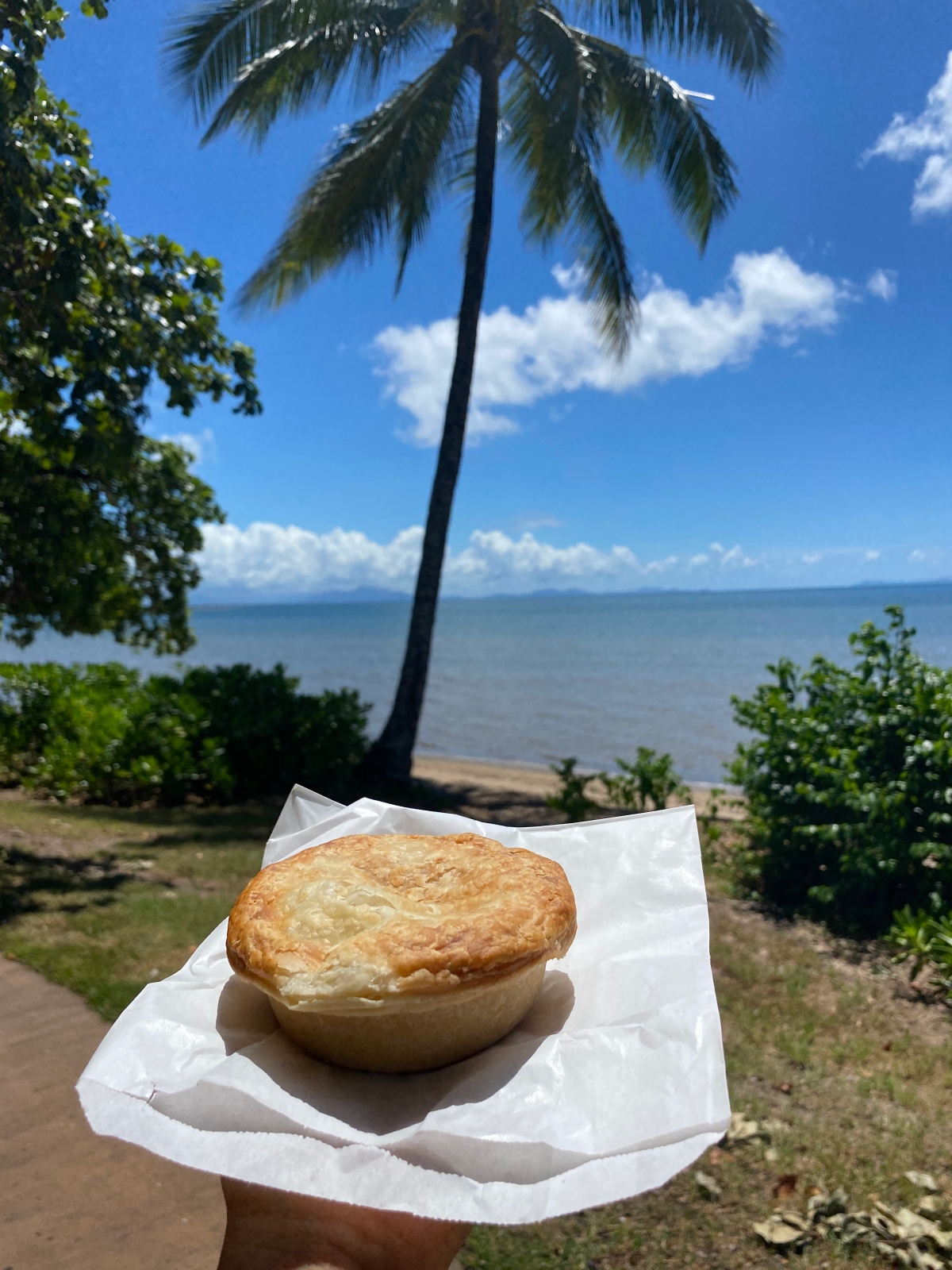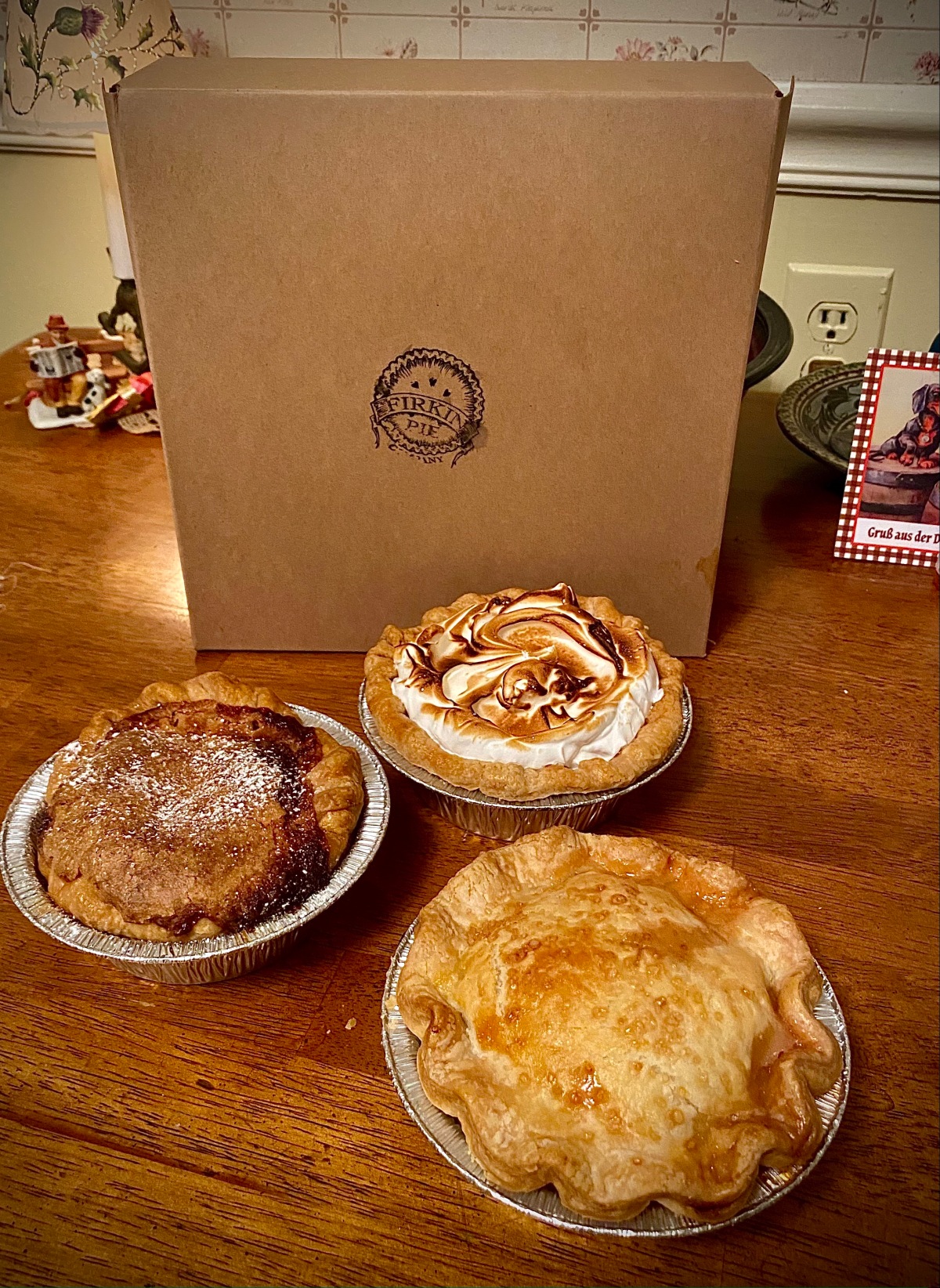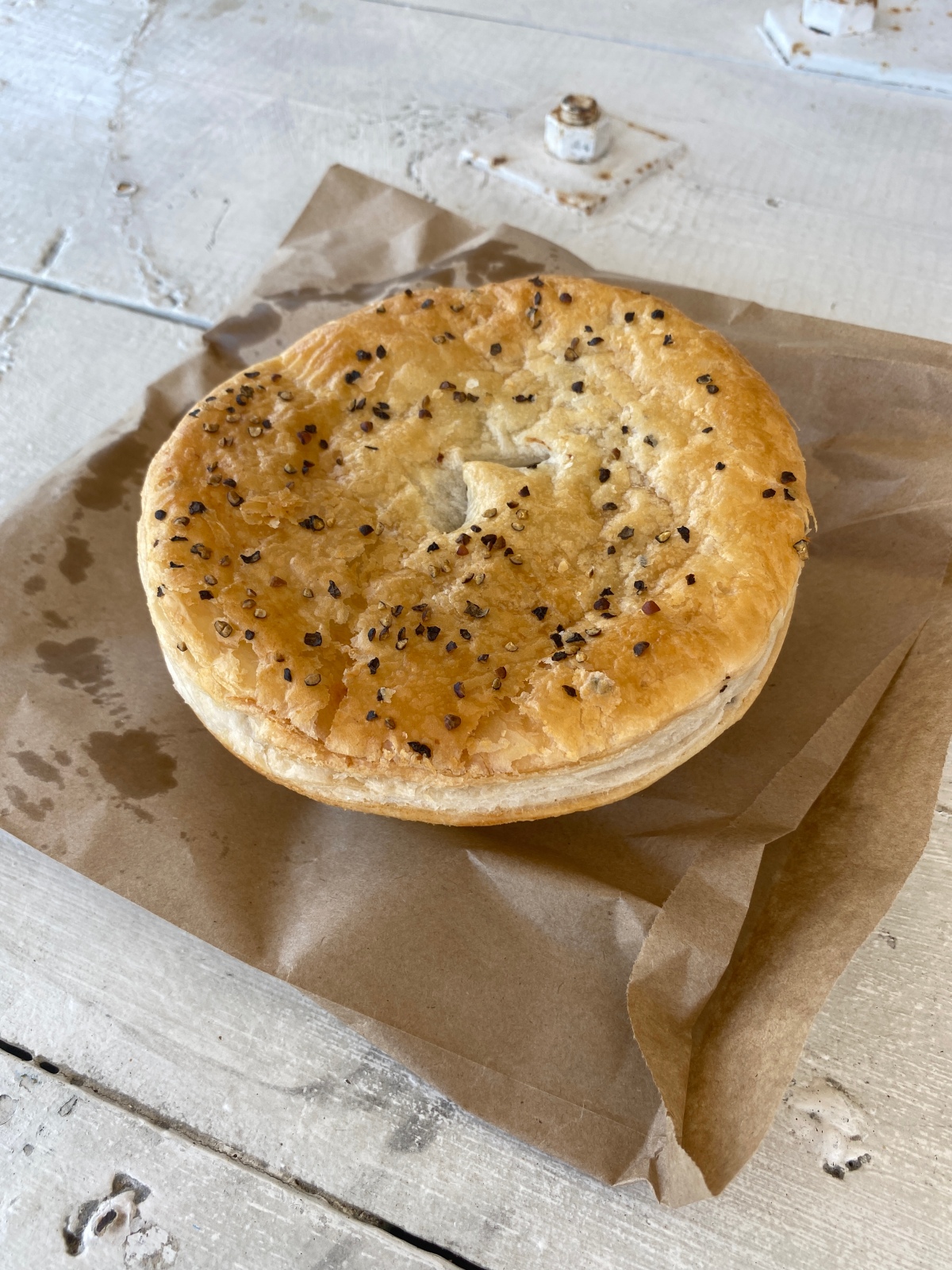The history of pie is a big more interesting than you might expect…
If I say “pie”, what comes to mind?
Perhaps, thoughts of a delectable dessert might be wafting through your mind. Apple, cherry, chocolate chess, lemon meringue, peanut butter…. maybe even a scoop of ice cream on top! Mmmmmm!
Or maybe your tummy is rumbling over the idea of sinking your teeth into a hearty, comforting savory pie. Pepper and beef, minced beef, chicken curry…… De-lic-ious!
Being American, I grew up with sweet pies.
I knew savory pies existed (I saw Sweeney Todd after all). But apart from a chicken pot pie here, or shepherds pie there, savory pies aren’t a culinary item I readily encountered until heading to Australia.
Meat pies are classic Australian comfort food, and Australians consume around 270 million pies a year. You can’t get too far in Australia without seeing a pie for sale, and even the smallest country towns seem to have some sort of pie shop.
While you can easily find sweet pies Down Under, savory pies are unusual to come by in the USA.
What’s up with that?
I dove into the history of pie to find out!
Like my other food history research (check out the history fries HERE and cheesecake HERE), diving into the origins of pie made me want to completely rip out my hair. Each source has discrepancies with muddled dates and facts. I put my bachelors of science to use and synthesized what I found to the best of my abilities. My sources can be found HERE, HERE, HERE, HERE and HERE.

A Brief History of Pie
The life of pie begins in Egypt, 6000 BC. Egyptians created doughs using grains such as oat, wheat, and rye and then fill them with honey, fruits, and nuts before baking them over hot coals. The dish continued through the decades, and there are drawings of these tasty treats the tomb of the unofficial father of pies, Ramses II (r.1304 to 1237 BCE).
The history of pie continues to Greece, 5th century BC, where a more familiar form of pie pastry was created. The Greeks mixed water and flour to form a paste that was then wrapped around meat and stuck under hot coals. The coating not only protected the meat from getting burnt, but it sealed in the juices, resulting in delightfully tender meat. When the Romans conquered the Greeks in 2nd century BC, they pillaged the concept of pie pastry along with ideas of art, literature, government, and architecture.
Ancient Roman bakers found that the pastry could serve as a way to both cook and preserve food. The shells, known as “coffyns,” were made of hard rye flour and were several inches thick. The coffyns would be filled with whatever meat was available, put in the fire for a few hours, then stored away. When the pies make their way onto the dinner table, the thick, hard shells were thrown aside.
Once the Romans had their hands on the pie, the dish spread throughout Europe. Each different culture put it’s own spin on the pie as bakers started experimenting with edible crusts and different filling options including both sweet and savory. Pie fillings can range from questionable mystery meat like crows and magpies, to the finest Cornish hen. Meaning the dish could grace both back alleyways and lavish banquet tables.
Pies arrived to Australia with the first colonists in the 1700s.
The dish stuck around and was a common refreshment food served on the railways. More pie shops proceeded to open across the country; little hand pies are easy to eat, cheap to make, and crammed full of calories to get working men and women through the day. This crusty meal really took off in the 1900s when football clubs began hosting “pie nights.” Tack anything onto sports, and you’ve got a winner.
When it comes to game day noshes, pies are to Australia as Hot Dogs are to the United States.
A good meat pie is pretty freaking delicious. Flakey, buttery crust surrounding piping hot, flavorful meat in a convenient hand held package that doesn’t break the bank. What’s not to love? Savory pastries in Australia aren’t limited to pies. In bakeries, you’ll find a whole host of savory baked treats such as savory muffins, savory scones, and savory scrolls (scroll= cinnamon roll in the US).
Why did the USA go sweet instead of savory?

Sugar became more affordable and accessible in the 1700s when the British colonized the sugar plantations of the Caribbean, making it easier to whip up sweet pies during fruit growing seasons. Records indicate an equal balance of sweet and savory pies up until the 1810s; the birth of the US sugar refining industry.
.According to the Southern food historian, Dave Shields, sugar became cheap and readily accessible practically overnight. The tasty new commodity opened up new culinary possibilities. Wine! Jams! Preserves! and, of course, pies! (Click HERE for the source).
The sweetness of saccharine gets those feel good chemicals pumping, so it’s no surprise that sugar boomed in popularity as soon as it became cheap. Sweet pies quickly became a quintessential taste of the United States as the dish became associated with “home.” As settlers trekked out West, they would use sugar to make anything and everything in pies, such as rhubarb, onions, and tomatoes.
Pie has continued as a staple dessert through the decades.

Babinda Bakery, Babinda, QLD 
Firkin’s Pies, Staunton, VA
Sweet pies became a part of American culture just as savory pies became a part of Australian culture.
That’s the beauty of the world, and why food is one of my favorite components of travel. Food is so much more than nutrition and calories; it’s an insight into a country’s past and present. Biting into a classic dish is a chance to sink your teeth into a new culture.
The thrilling part is that you never know what you’ll bite into next.


6 thoughts on “The Curious Life and History of Pie”
I have to say that this has been a revelation in more ways than one.
Being of the British persuasion myself I generally associate pies as being savoury (note correct spelling) but the idea of readily available sugar initiating the sweet pie is interesting. I can see how you have applied your academic and scientific training to researching this, it is a damned thorough piece of work.
I have been to Australia and eaten many meat pies, some great but mostly just “fillers” either during or after a night on the beer. Have you had the classic of a meat pie floating in a sea of thick pea soup and loaded to the gills with (usually American i.e. Heinz) tomato ketchup? Utterly brilliant at about 0100 before you stagger home.
I am now going to play with your scientific mind because I know your curiosity will prompt you to investigate. Do you know of pasties? Have you ever had one? Should it be top-crimped or side crimped? These are pies and so, having gone down this road, there is no turning back now! What about Shepherd’s Pie or Cottage Pie? No pastry involved at all and yet in currency as pies before your country was even born. Are they pies or not? What about Jamaican patties (which I am going to have a couple of very shortly as this post has made me hungry)? Different pastry, much the same principle. I could talk about pies all day.
Thanks for a great and informative read and happy hunting.
Ah yes the good old savory vs savoury! I will say I haven’t become accustomed to the spelling differences quite yet (“s” vs “z” particularly slips my mind!)
The interesting thing that I couldn’t pinpoint the answer to is why the sweet pie didn’t become more popular in Australia with the rise of the sugar industry. Perhaps the savoury pie was too entrenched in society, perhaps the sugar was mostly exported, perhaps tropical sweet fruits could satisfy the sugar cravings instead?
I don’t know much about pasties, but my curiosity is peaked! Thanks for the prompt, I’ll get investigating!
great post! and nice research work Katie!
Hi, Katie. Have you had strawberry rhubarb pie? I’ve always liked it, tho I haven’t had it in a long while. It was fairly common in parts of the USA, but maybe not anymore.
I have!! I actually am a big fan of strawberry rhubarb, the rhubarb helps cut the sweetness 🙂
Pingback: What’s the Deal With Eggs? – The Frugal Foodies